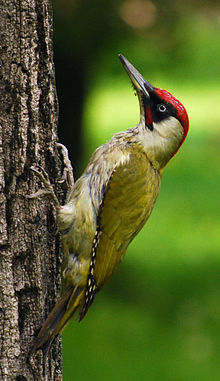Last weekend I went away with my mother and father to a very nice house with a swimming pool. While we were there we spotted a few lizards. I was watching one of them zip across the wall and hide behind a door and I suddenly thought of a question for the blog:
How do lizards manage to walk along places we can't (like walls and ceilings)?
We did a bit of research and found out that lizards use different methods to walk along walls and ceilings, depending on the type of surface and on the exact type of lizard.
First, lizards have claws. So, for example, the wall in the picture is full of little bumps and holes, and the lizard uses its claws to climb up.
But some walls and ceilings don't have bumps and holes and some lizards can walk up them too! The secret here is that lizards have little pads at the end of their fingers and toes. Our finger tips are also a bit like pads but there is one big difference. Lizards' pads are covered in tiny tiny tiny hairs that are adhesive (that means sticky). It's a bit like velcro, as my Pa said when we had a chat about lizards and geckos on Skype.
How does a fly land on the ceiling?
In fact, later I received an email from my Pa about flies (they also have sticky secrets):
Dear Iain
After we had talked of lizards and geckos this morning I remembered something.
A long time ago, before Pa was even born, there was a radio programme called The Brains Trust. Four very clever people answered questions from the listeners. Normally they answered questions pretty well.
Until one day a small girl asked "How does a fly land on the ceiling?' Being clever all four people thought - and then said "We DON"T know.'
In fact nobody knew for some years and it took very careful filming to show the fly does a kind of somersault and then uses suction cups on the end of its legs to grip the ceiling. If you think about it, this is amazing.
When you come here on a plane, the plane comes down and then rolls along the tarmac on wheels and the pilot puts on the brakes. If you look at a bird you'll see it slows down and comes down on a branch.
A fly can land upside down! it just goes bzzzzz, flips over and sticks to the ceiling. I am not fond of flies but this is remarkable.
Lots of love
Pa
And then I found this video of a fly making a somersault! It has been slowed down so that we can see it. And Pa is right. It is remarkable!
And then this morning, I thought of another question that is also related to the lizard and fly questions. At night we are reading Roald Dahl's Danny the Champion of the World, and we've just got to the bit where Danny and his father are injecting raisins with sleeping pill powder to make the pheasants drop from the trees when they are roosting at night so that they can poach them.
And I wondered, how do pheasants stay up in the trees while they are sleeping (when nobody has given them any sleeping pills!)? So here it goes:
Why don't birds fall off branches when they are asleep?
We've found out that it's all in the legs. Their legs are very clever and when they are bent (like they are when they are perching), their toes automatically "lock". So they don't even have to think about it. As soon as they perch, their toes grip onto the branch tightly without any extra effort. When they want to fly off, birds straigthen their legs and their toes are "unlocked" and it's "Fly away Peter, fly away Paul!".
So there you go! Lizards, flies and birds and sticking to things! That's what it's all about today.
Remember I like comments!
 In Spain we eat a lot of clams and a lot of mussels. My younger cousin Inés (who doesn't live in Spain anymore but in Edinburgh, absolutely loves mussels). So I have had a lot of time to look at this type of seafood and wonder about things.
In Spain we eat a lot of clams and a lot of mussels. My younger cousin Inés (who doesn't live in Spain anymore but in Edinburgh, absolutely loves mussels). So I have had a lot of time to look at this type of seafood and wonder about things. 

























